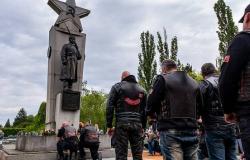For many years, we have been conducting a dialogue about Czech politics with the political scientist Petr Sokol. This time we tried to describe its floor plan, conflict lines and direction variants.
A number of people say that the claim of two fixed voter worlds in the Czech Republic is nonsense. At the same time, political geography has been clear since 1992 – there are areas and regions that have been voting similarly, if not identically, for years. Someone rechristened the two voter worlds Czechia A and Czechia B. Schematically speaking, the urban Czechia, which is more center-right, and the rural Czechia, which votes more for the left. Of course, society develops and new voting groups are added every year. Nevertheless, the voter maps created on the basis of voting in national elections speak clearly: we have two worlds here, which are also relatively impenetrable.
Isn’t the problem rather in the designation Czech A and B? Does that sound too elitist?
Opponents of the thesis of two electoral worlds deny it as a whole. They claim it doesn’t exist at all. But the electoral maps say the opposite. Moreover, every year new voters come of age and others leave this world. Despite this variation, it is still true that the right has the best results in the large regional cities and in the strip of Czech districts between Jablonec and České Budějovice. Voters change, voter behavior in individual regions remains more or less stable.
And the title?
The Czech A and Czech B designations were used from the Polish model. I understand that it can create emotions. In the theory of two worlds, however, it is not the case that Czech Republic A is somehow better than Czech Republic B. We could easily call them, for example, the blue Czech Republic and the red Czech Republic. In both of these worlds, however, some values and perhaps even emotions are experienced, which regularly lead to the same choice. This is an undeniable fact.
You can read the entire interview on ECHOPRIME or in the digital version of the magazine. From Thursday, the printed edition of Týdeník Echo is also on sale at the stands. You can subscribe to the weekly Echo from 249 crowns per month here.
Tags: Central Europe #leave West Czech Republic #divided worlds





